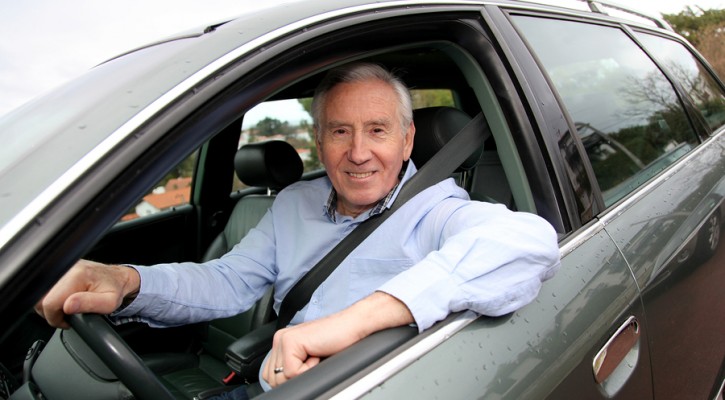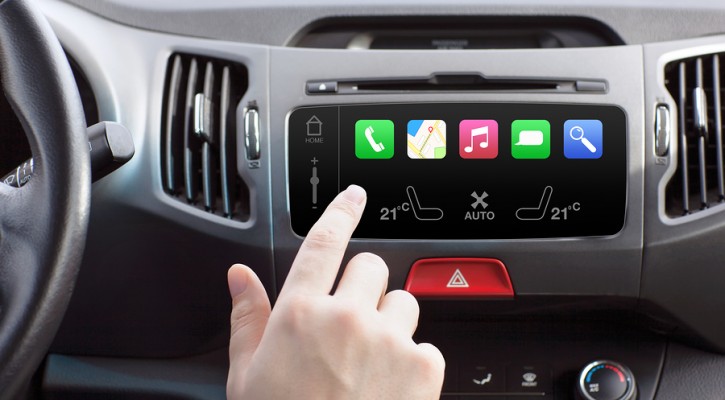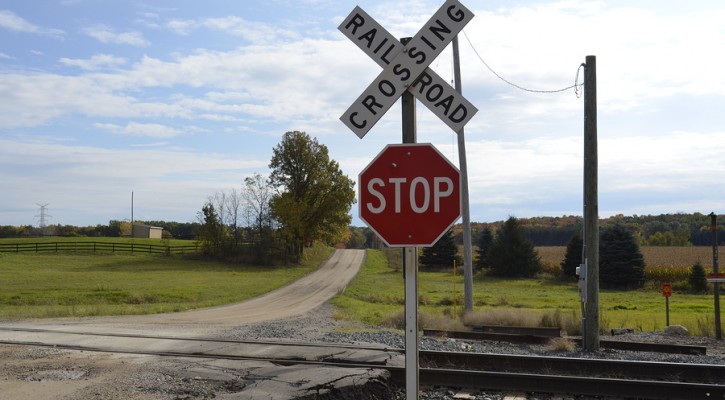
Driving Dehydrated And Without Rest Like Driving Drunk
July 21, 2015
Two studies from researchers in Great Britain show that driving while dehydrated and driving too long without a break on long trips can be dangerous.
The first study conducted by researchers at Loughborough University in England looked at the effects dehydration had on drivers. The researchers conducted a two-day experiment to compare driving abilities when drivers were hydrated and dehydrated. On the first day subjects who were properly hydrated were observed while driving on a simulated driving course. According to the researchers, the hydrated drivers had 47 driving incidents. On the second day, when the subjects were dehydrated, the number of incidents more than doubled to 101 incidents.
According to the researchers, the number of driving incidents recorded by those subjects that were dehydrated were equivalent to someone operating a vehicle with a blood alcohol content of 0.08, the legal limit in both the UK and the US. The incidents recorded included, lane weaving, braking late, and not stopping at the stop line at intersections.
According to WebMD.com. some of the symptoms of dehydration can include:
- Weakness
- Dizziness
- Palpitations (feeling that the heart is jumping or pounding)
- Confusion
- Sluggishness
- Fainting
All symptoms similar to alcohol intoxication.
Another poll conducted by IAM, a British highway safety organization, shows that drivers tend to drive too far between breaks on long trips. According to the drivers polled, 65 percent didn’t stop for breaks on long trips because they didn’t feel they needed to. Seventy- nine percent of the drivers polled said they wouldn’t stop unless there was a rest stop conveniently located on the highway.
The stresses of dealing with highway traffic along with what’s known as “highway hypnosis” can cause a driver to become fatigued and lose his or her focus on the whole driving picture. Without those refreshing breaks, fatigue can easily set in and, as shown by the research mentioned above, becoming dehydrated can lead to driver errors.
Whether they feel the need or not, drivers should stop at least every two hours or 100 miles to rest and refresh themselves. stopping for a short break to relax and have a drink can help a driver avoid fatigue and the problems caused by dehydration.
Drinking caffeinated drinks are fine if you want to fight off fatigue but caffeine has a diuretic effect that causes the body to lose fluids. To make the most of your rest breaks, alternate drinks between caffeinated drinks such as coffee or cola and non-caffeinated drinks such as water or fruit juice. Avoid highly caffeinated “energy drinks” at all costs.
Read more: Dehydrated drivers make the same number of mistakes as drink drivers
Two-thirds of drivers won’t take rest breaks on any long journey, IAM finds

Older Drivers Can Be Aided By Technology
July 17, 2015
When it comes to older drivers, stereotypes aren’t necessarily true. Years ago, safety experts predicted a traffic nightmare as baby boomers reached old age but that hasn’t turned out to be the case. In fact, traffic data from the Insurance Institute of Highway Safety shows that traffic deaths among drivers 70 and older have been on a steady decline since the high point in 1997.
There are fewer drivers over the age of 70 and they tend to drive fewer miles. Safety experts feel that many older drivers “self regulate”; that is they tend to restrict driving to less busy times of the day and they avoid driving at night. Another reason for the decline in deaths of older drivers is that older drivers tend to be healthier and have better medical care than drivers in the past.
It’s impossible to tell at what age a driver is too old to drive. It depends on the individual driver and everyone ages at a different rate. A new study published recently tracked 1000 people born in 1972-73. Using a range of biomarkers, they found that the biological age of the one-thousand 38 year olds ranged from 30 to 60 years apart. Some were aging rapidly while others aged very slowly.
Still, it’s undeniable that most people will reach an age when they’ll no longer be able to drive and many families will face the difficult decision of when to take away the keys.
However, for those drivers reaching their 70’s and still driving safely, technology has the answer to help them to continue to drive safely and, hopefully, reduce the fears that any family members may have. If they can afford it, a new car with the following features can help to keep them and any other driver, regardless of their age, safer on the road. While these packages may cost a bit more, their price may be offset by a reduction in insurance costs.
- Collision Avoidance – Collision avoidance technology uses a combination of either radar, lasers, and cameras to keep an eye on vehicles and pedestrians ahead. Those systems work together to warn a drivers if they’re approaching too closely to another vehicle or object. If the driver doesn’t heed the warnings, the system will apply the brakes and stop the car.
- Lane Departure Warning and Prevention – This system warns a driver if the vehicle is drifting out of the lane and uses the dynamic braking system to steer the car back into the lane if the driver doesn’t take action.
- Adaptive Headlights – This system turns the headlights in the direction of the wheels to illuminate the road more clearly on curves.
- Blind Spot Detection – This system uses sensors to detect other vehicles in a driver’s blind spot to warn a driver who’s about to move into another lane or who may be drifting over the line. These systems can either warn the driver or work together with the lane departure system to prevent a driver from moving over.
To find a list of vehicle manufacturers who offer these technologies, visit: Insurance Institute for Highway Safety – Crash avoidance features by make and model

Computer Display Screens In Cars Add To Distractions
July 8, 2015
Computer display screens that automakers are adding to their new models are going to add to the distractions on the road according to experts. The screens, which are tablet size, are supposed to fulfill all the functions of a smartphone.
Both Google and Apple are making built-in computer display systems for cars and automakers seem to be rushing to get them installed and out to potential buyers. According to the automakers, it’s what the customer wants.
Google is producing an Android based system called Android Auto and Apple is producing an iOS operated system they’re calling Apple CarPlay. Both systems are designed to sync with and provide all of the features available in a smartphone including, email, twitter, streaming music and maps. Other apps are also available and more are sure to be added as time goes on.
The computer makers claim that the built-in display screens, some of which feature no-touch and voice activated controls are safer for drivers to use than trying to get all the same information while holding a phone. That may be true in some cases but only to a small degree.
Using these display screens will still require a driver to look away from the road ahead and look at the screen, even if only for a couple of seconds. At 45 mph, a car will travel 132 feet in two seconds and a lot can happen in that distance and time.
According to researchers, voice-activated systems aren’t that safe. Studies have shown that a voice activated system like Siri can cause even more distraction than a hand-held phone. Part of the distraction comes from the frustration of dealing with a voice-activated system that doesn’t understand what you want or displays the wrong information.
When it comes to voice activated texting, researchers in Texas found that, if a driver chose to visually verify the contents of a text, the voice activated systems offered no safety advantage over manual texting.
The problem comes in the skills and brain functions needed to drive. Those are:
- Visual – Keeping your eyes on the road ahead and watching for signals or potential hazards.
- Manual – The manual act of steering and operating the pedals.
- Cognitive – Using your mind to interpret what you are seeing and to make minor or major changes in steering, speed, or both depending on what’s happening on the roadway.
All three of these skills and functions must act together in order to drive safely. If one or more are involved in another activity, driving becomes much more dangerous:
- Whether using hand-held phones or built-in display screens, to make choices, your vision is focused on the display screen and not the road ahead.
- While formulating a response to a text message or carrying on a phone conversation, your cognitive abilities are tied up in the act of texting or listening to the other person and your ability to make rapid decisions regarding the traffic situation is diminished.
- When waving your hand over a display screen to look for or make a music selection, you’re using all three of the functions and skills that should be focused on the very important job of driving.
Many drivers will find, much to their regret, that these display screens don’t add any appreciable degree of safety and they may make the road much more dangerous.
Read more: Car dashboards that act like smart phones raise safety issues

Prescription Sleeping Pills Lead To Higher Crash Rate
July 7, 2015
A study conducted by the University of Washington School of Pharmacy shows that people using prescribed sleeping pills are at a greater risk for experiencing a motor vehicle crash. The research, published in the American Journal of Public Health, revealed that the risk of a car crash is nearly double among new users of the medications temazepam (Restoril), zolpidem (Ambien, Ambien CR) and trazodone (Desyrel).
The dangers posed by these drugs for drivers is worse for those who have been newly prescribed and the increased crash risk can last for up to a year. Among the three drugs followed in the study, temazepam showed the least risk.
The head researcher, Ryan Hansen was quoted as saying the idea for the research came from a friend who, after taking a prescription sleeping pill, woke up in the kitchen and noticed a bite taken out of some raw pork in the refrigerator.
Over the last few years there have been many instances of what has been dubbed “sleep driving” while using the popular prescription pill Ambien. The most notable story involved US Rep. Patrick Kennedy of Rhode Island who crashed into the gatehouse of the US capitol in the middle of the night. He explained to capitol police that he was late for a vote.
The list of side effects for Ambien include the following warnings;
- “Ambien may impair your thinking or reactions. You may still feel sleepy the morning after taking this medicine, especially if you take the extended-release tablet, or if you are a woman. Wait at least 4 hours or until you are fully awake before you do anything that requires you to be awake and alert.”
- “Some people using this medicine have engaged in activity such as driving, eating, walking, making phone calls, or having sex and later having no memory of the activity. If this happens to you, stop taking Ambien and talk with your doctor about another treatment for your sleep disorder.”
Ambien has become one of the most prescribed drugs in America. The researchers in this study suggested that health care providers need to evaluate the necessity of these sleeping pills vs the risks they pose. They suggested that insomnia can be treated without sleeping pills by lifestyle changes such as reduced caffeine use and exercise.
Any drug that can make you sleepy, including common over-the-counter antihistamines such as Benadryl can affect your driving. You can be arrested for DUI if your driving abilities are impaired by any type of drug including over-the-counter and prescription medications.
Read more: For new users, sleeping pills may double car crash risk

